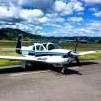-
Posts
5,404 -
Joined
-
Last visited
-
Days Won
25
Content Type
Profiles
Forums
Blogs
Gallery
Downloads
Media Demo
Events
Everything posted by Ragsf15e
-
I think it might be important for us to make sure our oil temp sensors are in the same location. I know there’s a place it’s supposed to be, but there are “alternate” locations it could be, and the oil temp varies a lot throughout its circulation.
-
Ahh, makes sense if you’re breaking it in. Another Ovation owner PM’d me and said they get ~167knots on 12.5 gph when lop ~10,000. That’s awesome range.
-
95 definitely too fast. If you can adjust it down, that will be awesome!
-
The easiest way is with it up on jacks and an air system (pitot/static tester). Put the gear switch up and then slowly increase airspeed until the gear goes up.
-
https://knr-inc.com/shoptalk-articles.html?view=article&id=93&catid=25 @WheelPantsOff, try this.
-
There’s a “shoptalk” or mapa article describing this with pictures. I’ll Look around with some google-fu and i think itll help.
-
Since this is kind of a random thread, I don’t feel bad asking random questions… are you lean of peak at 14.7gph and 167 knots? What altitude? What would your Ovation do around 10,000’ lean of peak? How much fuel will you plan for on a 525nm xc? 45 plus 15 (reserve ) for 60 total?
-
@PT20J is the expert on the wiring diagram. The other thing that can keep them down is the up limit switch. I think the bypass only bypasses the airspeed switch though, so if that fixed it, maybe there’s your answer? There is a second circuit available on the airspeed switches, so you may be able to switch your connection and still get it to work.
-
Depending on exactly what you get with the stc, it may be worth it… when you upgrade an Eagle to 310, isn’t that the stc that also gives you ~150lbs of gross weight increase? Maybe the Ovation already has that at 280hp?
-
Yikes.
-
Good customer service! However, it does seem problematic… no extinguisher (or fire) is going to be good in a tiny cockpit, but i think it’s helpful if you can stop it when you want instead of just waiting until it runs out.
-
I think you could very well be correct, but the reg could be a little unclear because it says “where air traffic control is exercised” and not “within the borders of class b, c, or d airspace…”. Maybe I should be less nervous to read it your way, but I’ve always used Mike’s interpretation.
-
Yeah, that’s where it gets interesting. We should look at the reg, but it’s something like “will follow all ATC instructions…”. So once ff has given you a heading and then you cancel ff (remaining clear of airspace of course), i think they could still say you violated the regulations.
-
And that’s exactly the tradeoff I don’t think the younger controllers get. I have definitely had the same thought… oh im coming up on the handoff to xxx approach, maybe it’s time to cancel ff. Just because you’re vfr doesn’t mean they should make you the only one being vectored! Now, to be fair, my home class c (Spokane) is very good to ga, but they’re also not very busy.
-
I hear you! One thing that bugs me are a couple of class C airspaces i fly by take my vfr flight following as permission to just vector me way out of my way even when my route wouldn’t have actually gone through their class c borders. I don’t mind a few small heading changes to avoid the ifr arrivals, but if you’re going to vector me all over the place then I might not want flight following any more and that’s not good for either of us!
-
If you’re flying out west right now, you’re gonna want a turbo, but not for the usual reason (to get over the mountains!)… almost all of Oregon and northern Nevada was smoke up to 11-14000’. For fun, look at how many tfrs are in central Oregon! Many of them up to 11,000’. It gets higher east towards Boise. We flew 525nm from Spokane to Carson City NV into a headwind and forced to slowly climb to try to stay out of the smoke. The F is pretty awesome, but she was tapped out at 14,500’ (4 people plus bags, 2700lbs on departure). Density altitude was 15,900’! It’s also slower up there and the hw just made it worse. hazy Reno international in the center.
-
Yeah im fit too and not too old, but my Oxy sat drops faster than my wife and kids. People are different. It’s not really a fitness thing (although that can make it worse). I used to do the altitude chamber in the Air Force, and I would pretty much do five minutes, see my symptoms, and put the mask right back on. No reason to play around up there, I just didn’t feel good. Some people start to feel so euphoric that they keep it off for a long time and try to see how long they can make it. By the end they have no idea what they’re doing.
-
It (hypoxia) is not at all related to how long you can hold your breath. That just isn’t how it works. The partial pressure of oxygen is much less at high altitude and the oxygen is basically being pulled out of your blood through your lungs and not being replaced in sufficient quantities. Holding your breath is no indication of what will happen to you if you lose O2. You really need an altitude chamber ride (and the class).
-

After a 2 minute taxi for fuel, my F wouldn’t start
Ragsf15e replied to gwav8or's topic in Vintage Mooneys (pre-J models)
After shutting down a few drips of fuel is relatively normal. When it’s flooded, it’s much more like constant drip. Need to be careful though, there are two drain tubes there. One is connected to the sniffle at the bottom of the intake (right on bottom of the engine). One is connected to the fuel pump (mechanical one, back of engine). The fuel pump can also leak fuel there and that’s something to notice as it indicates a problem with the pump (it can also leak oil). So take off the side cowl and look closely at those two drains. -

After a 2 minute taxi for fuel, my F wouldn’t start
Ragsf15e replied to gwav8or's topic in Vintage Mooneys (pre-J models)
I doubt this is part of your issue, but I typically prime with throttle and mixture full forward. If the throttle is back towards idle (1/4”?) the idle mixture valve limits the fuel a lot. You can see this if you have an engine monitor, watch the pressure. With the throttle back, it will build and then slowly leak down after the pump is off. If you prime with the throttle forward (even half is fine), you will barely build pressure and it falls off immediately when you turn off the pump. It’s a much more consistent prime as the fuel is flowing instead of restricted to the idle mix valve. -
I don’t know why people would say a 406 elt won’t help/work? Even the non gps versions have pretty tight location ellipses from the satellites. Yes it will cost something to install, however you can probably do much of it under supervision. It also gives you the little red button on the panel that you can push (time allowing of course) to activate it prior to landing out somewhere. I think it’s a worthwhile investment that I hope I never need, however I do fly over a lot of very remote terrain.
-
@Sabremech, Eric nailed it. It was mine. Very high Da landing (like 9500’ ish). I didn’t have the mixture full or too lean. It was probably a tad too rich if anything, but maybe an inch back. With the throttle at full idle, that shouldn’t matter. My idle is set real low (like 500ish I think) and generally that’s fine but apparently it needs a little more air at very high altitude…
-
I agree it sounds like it should be an exhaustive list and should be clear. I should have referenced the legal interpretation the others have mentioned that opens up the possibility of other tasks as that’s what I meant. The regulations are rarely interpreted exactly as written, or maybe just interpreted differently by different people.
-
That’s explicitly not a complete list though, and the task is simple and uses standard parts as @Utah20Gflyerpointed out. If comfortable, I’d do it and log it.







